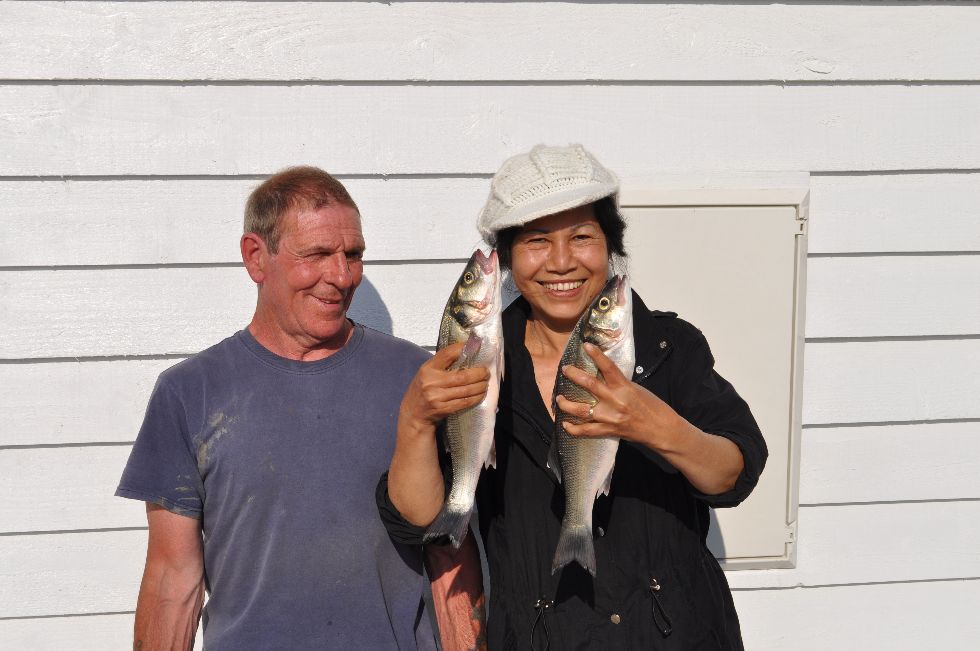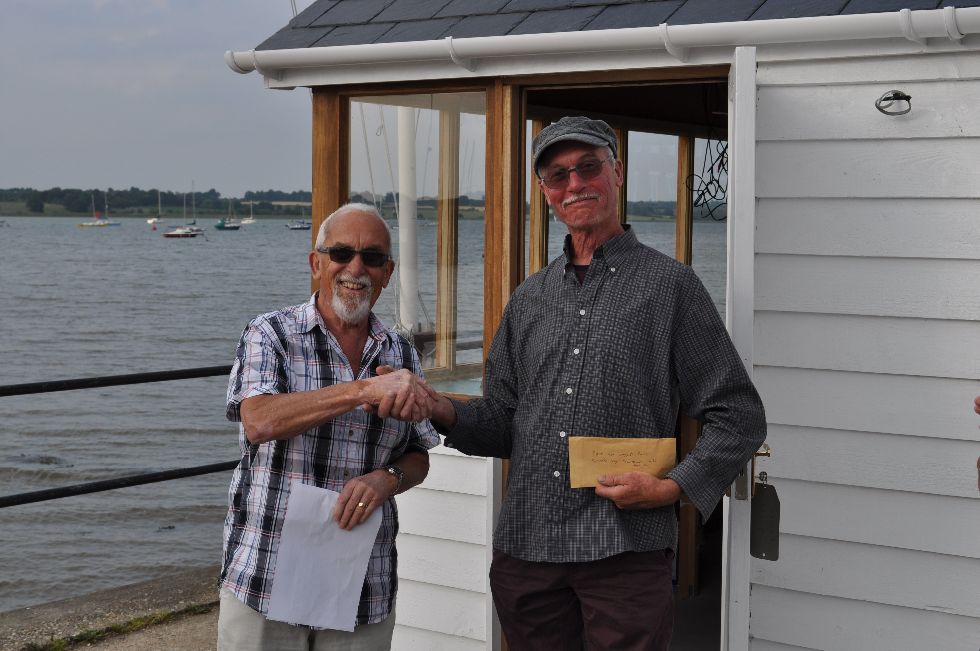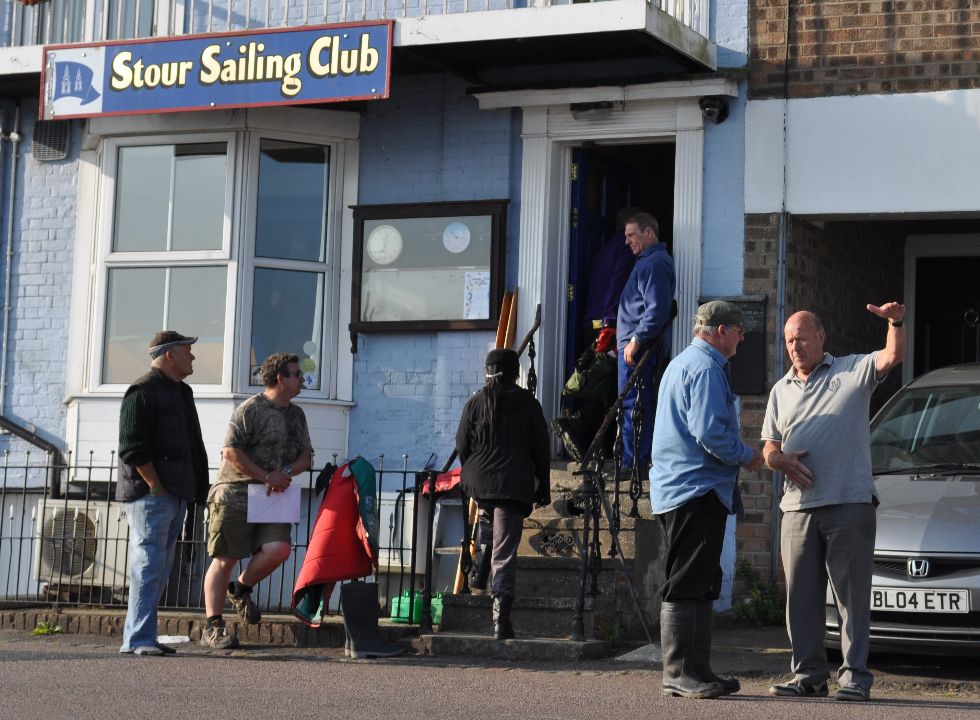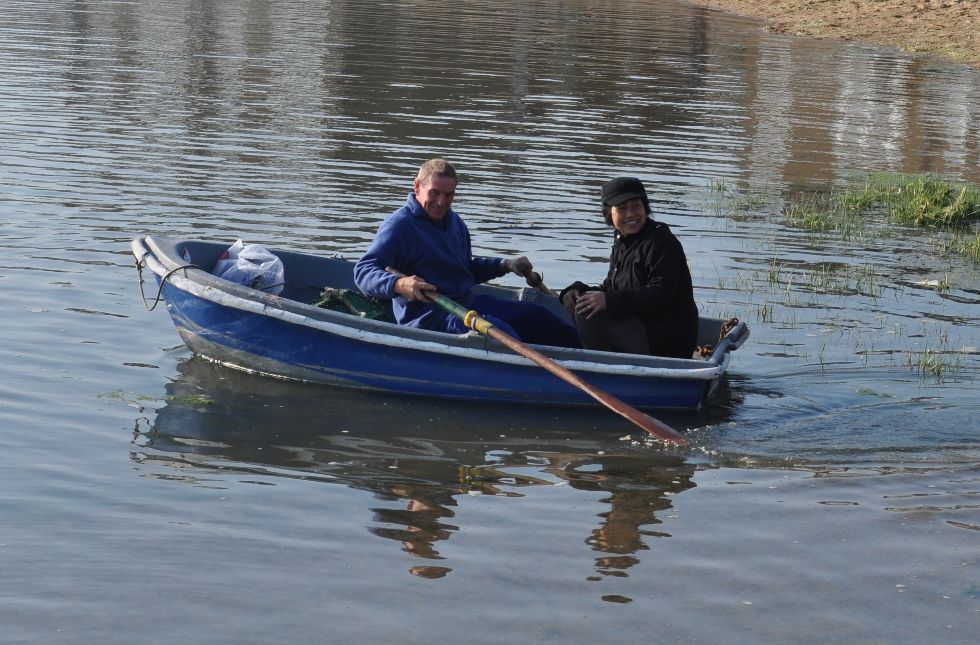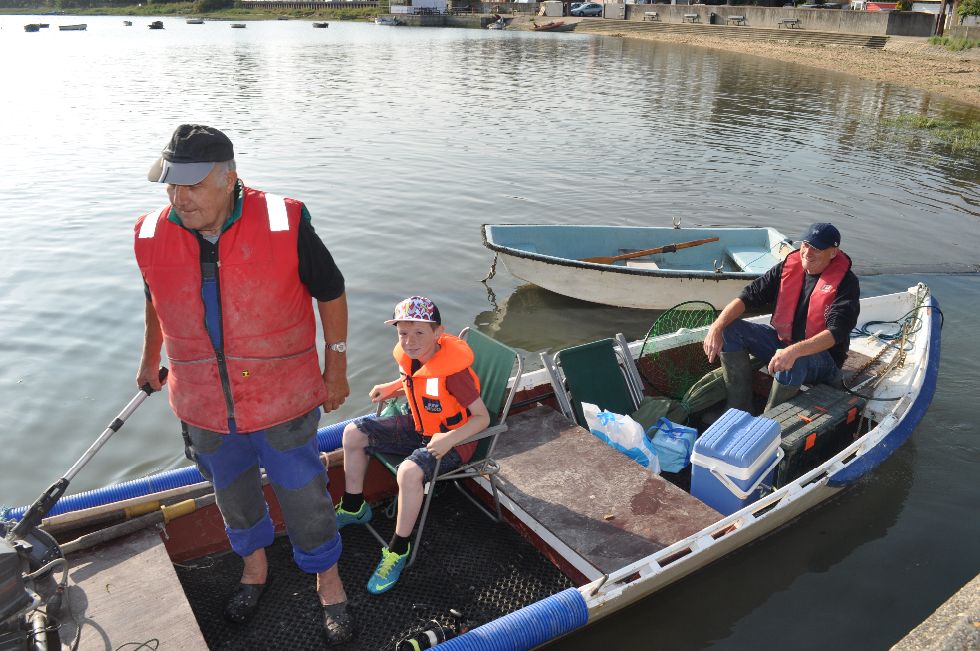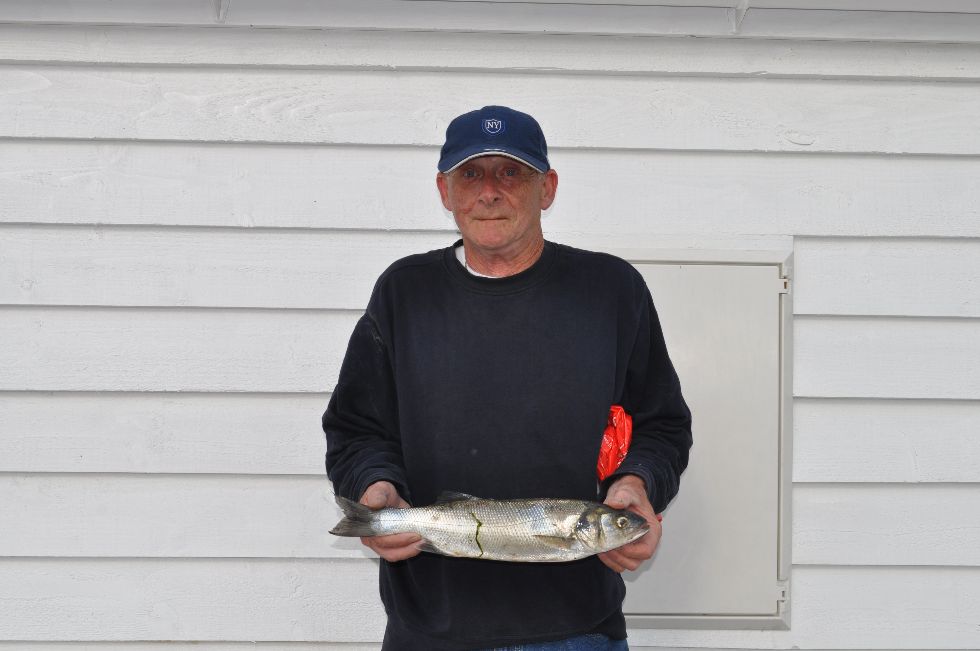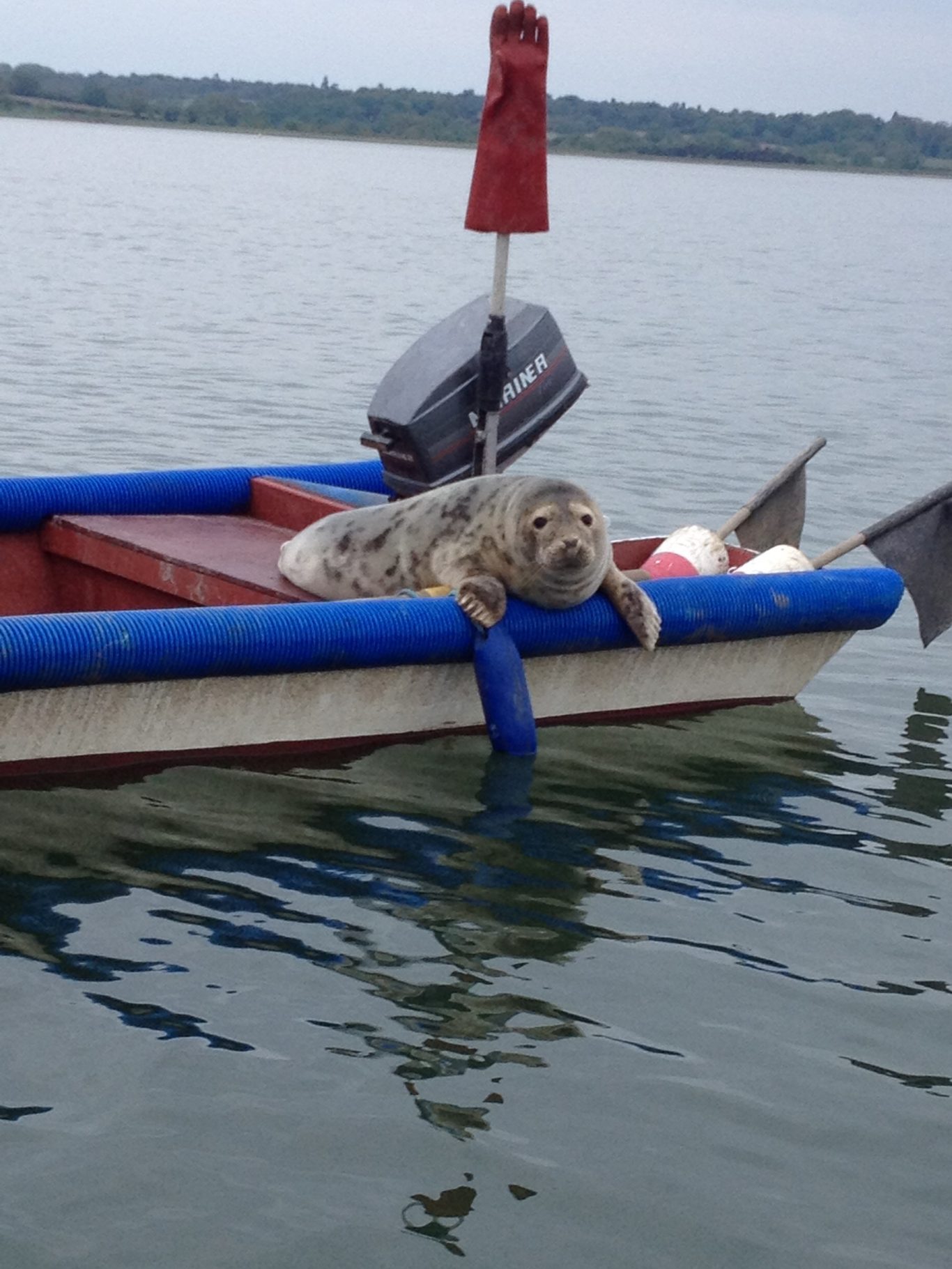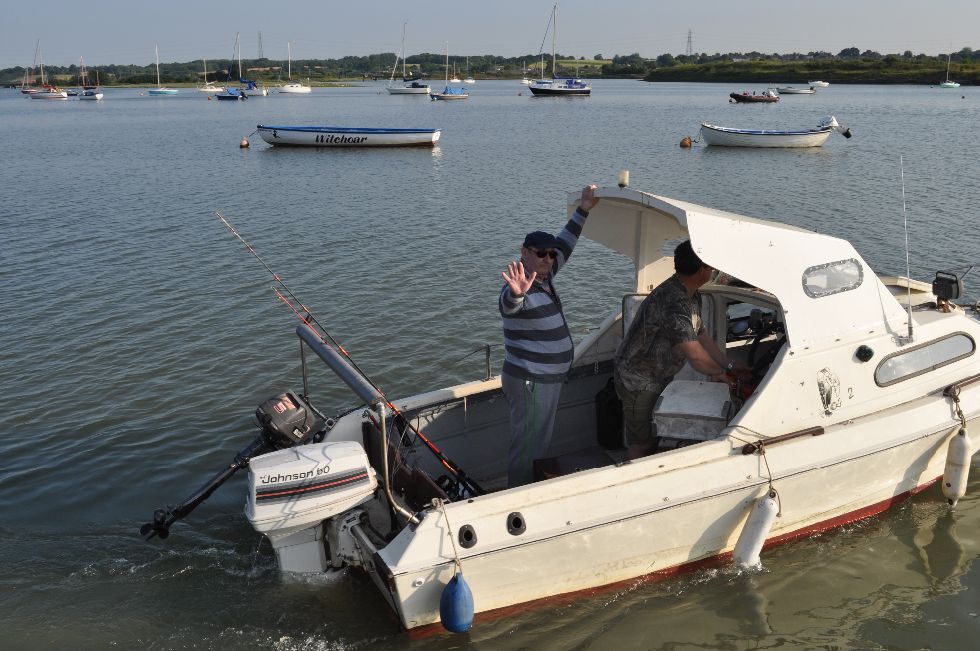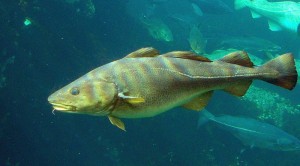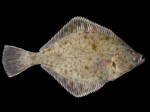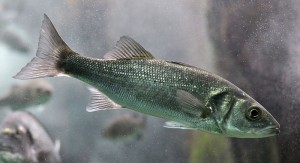To many Club members fishing is a mystery, myself included, says Alan Hodgson, club member and active fisherman.
Alan Hodgson is a local man and first started fishing, with his brother, as a boy of 6 or 7 at the mill pond in Dedham, where he lived. That was coarse fishing and there was no possibility of eating most of his catch except eels, which he still likes.
By the time he was 12 or 13 he would cross the fields, lifting his bike over the styles, to Flatford. There he would fish at Judas Gap in the brackish water at the very top of the estuary. He mostly caught mullet. He says that sometimes there were so many that you could easily see them and could catch them with only a weight and 3 treble hooks, not needing bait. He has also caught sea trout at the same place. He says that mullet need salting before you cook them and they have firm white flesh.
As he grew up in the 1960s, he was able to fish from the beaches at Shingle Street, East Lane, Landguard and Holland and the piers at Felixstowe and Walton, catching cod, and whiting. He likes to fish from the beaches at night because the fish come in closer to feed in the dark. He still uses a pump-up Tilley lamp. He says that, especially in winter, it is important to wrap up well with thick socks. From Halfpenny Pier he has caught flounders and pouting. He uses a beachcaster rod, with a multiplier reel and a shock leader, which is a piece of 40 lb line attached to the main line which is 15lb, this enables a good swing as the shock leader has a few turns on the reel. If there was no shock leader the 15 lb line would break off. For pier fishing a drop net is also needed for landing the catch.
He has never been one for big catches; when he has caught enough for eating he packs up and goes home. On occasions, when the fish have been giving themselves up, he has given his extras to friends.
Now, as well as beach fishing, he fishes in the river on his own, mainly from his dinghy, or sometimes from his cruiser, ‘Marise’.
Bass are common in the river and can be caught on line with lug worm bait or by using a spoon shaped artificial lure that spins in the current. He says that, when sailing in ‘Marise’, he is sometimes tempted to trail a line with a spinner, but, if he gets a catch, handling the line and the tiller and keeping an eye on the wind all at once can be exciting. Bass usually feed on a rising tide so this is a good time to fish with bait in the right places. Of course, he doesn’t say where the right places are. As well as Bass he has caught Thornback Skate in the Stour and Blackwater.

